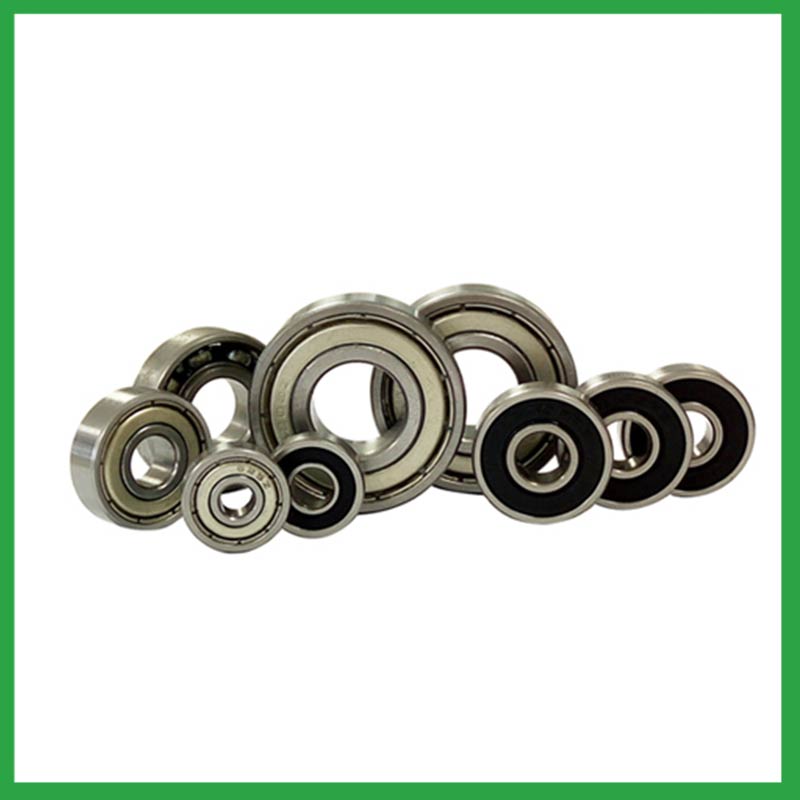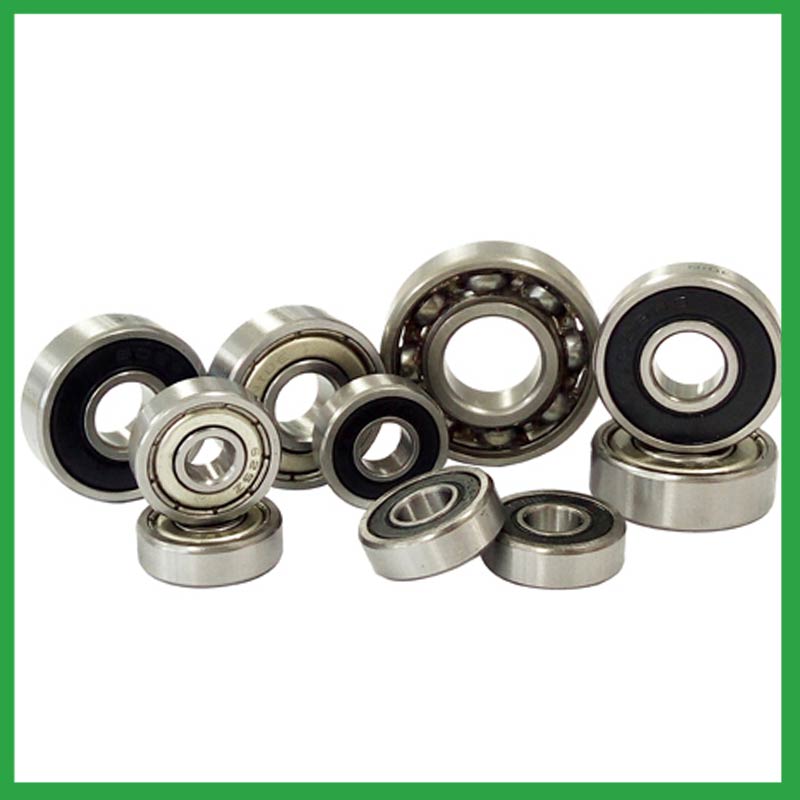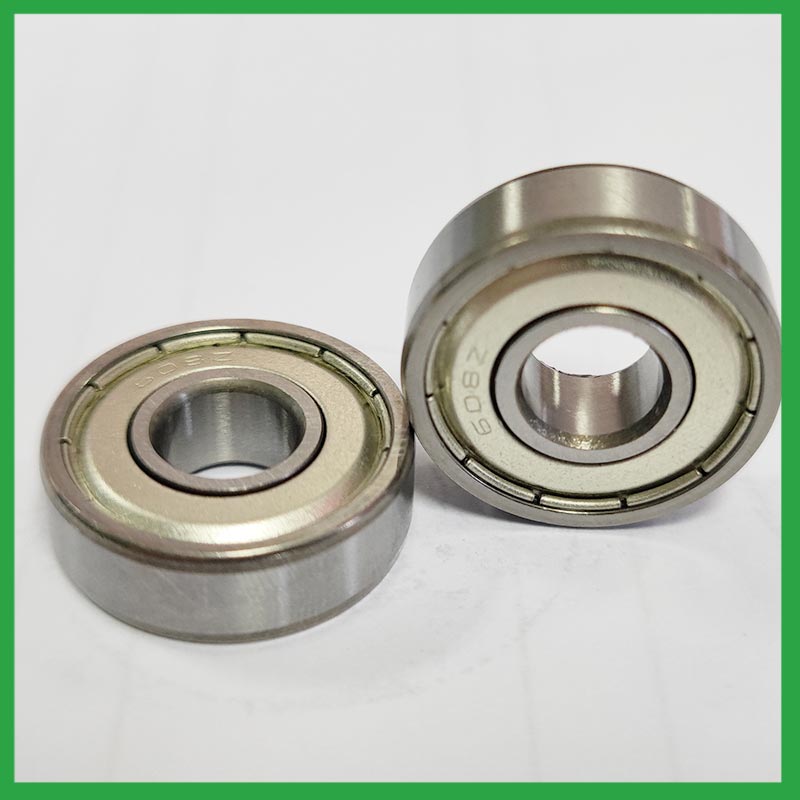2024-03-07
Ningbo Haishu Nide International Co., Ltd is specialized in bearings export production selling and after-service. In practice for many years, we established strict quality assurance system. Our products range covers insulation paper,magnet,carbon brush,commutator,shaft,thermal protector,fan,deep groove ball bearings, spherical roller bearings,ball bearing,motor cover and lamination,etc.We can do OEM products, and do following drawings.
Nide wishes is to provide world wide customers with one-stop service for the motor manufacturing. Make motor, turn to Nide, everything will be easy !
ball bearing---FAQs Guide
1.What is a deep groove ball bearing?
Our company has many years of ball bearing experience and expertise. A deep groove ball bearing is a type of rolling element bearing that consists of an inner and outer ring, a set of steel balls, and a cage to keep the balls in place. The inner and outer rings have deep, circular raceways that allow the balls to rotate freely, reducing friction and enabling smooth operation. These bearings are commonly used in a variety of applications, including electric motors, automotive components, and industrial machinery. They are designed to handle both radial and axial loads and are known for their high durability and low maintenance requirements.
2.What scenarios are suitable for self-lubricating ball bearings?
We continue to invest in research and development and continue to launch innovative products.
1. High-speed applications: Self-lubricating ball bearings are suitable for high-speed applications where traditional lubrication methods may not be effective. The self-lubricating properties of these bearings ensure smooth operation at high speeds without the need for frequent lubrication.
2. Extreme temperature environments: Self-lubricating ball bearings are ideal for use in extreme temperature environments, such as in industrial ovens or freezers. They can withstand high temperatures without losing their lubricating properties, ensuring smooth operation and reducing the risk of bearing failure.
3. Dirty or dusty environments: In applications where traditional lubricants may attract and trap dirt and dust, self-lubricating ball bearings are a better option. They have a low coefficient of friction, which reduces the build-up of debris and extends the bearing's lifespan.
4. High load applications: Self-lubricating ball bearings are suitable for high load applications, such as heavy machinery or equipment. The self-lubricating properties of these bearings reduce friction and wear, allowing them to handle heavy loads without the need for frequent maintenance.
5. Food and beverage industry: Self-lubricating ball bearings are commonly used in the food and beverage industry due to their ability to operate without external lubrication. This eliminates the risk of contamination from lubricants, making them a safe and hygienic option for food processing equipment.
6. Medical equipment: Self-lubricating ball bearings are also suitable for use in medical equipment, such as surgical tools and imaging machines. They can operate without the need for external lubrication, reducing the risk of contamination and ensuring smooth and reliable operation.
7. Marine and offshore applications: Self-lubricating ball bearings are resistant to corrosion and can withstand harsh marine environments, making them suitable for use in marine and offshore applications.
8. Automotive industry: Self-lubricating ball bearings are commonly used in the automotive industry, particularly in high-performance vehicles. They can withstand high speeds and temperatures, making them ideal for use in engines, transmissions, and other critical components.
9. Agricultural equipment: Self-lubricating ball bearings are suitable for use in agricultural equipment, such as tractors and harvesters. They can operate in dusty and dirty environments without the need for frequent maintenance, making them a cost-effective option for farmers.
10. Aerospace industry: Self-lubricating ball bearings are used in various aerospace applications, including aircraft engines, landing gear, and control systems. They can withstand extreme temperatures and high speeds, making them a reliable choice for critical aerospace components.
3.What are the accuracy levels of ball bearings?
We have a good reputation and image in the industry. The quality and price advantage of ball bearing products is an important factor in our hard overseas market. The accuracy levels of ball bearings can vary depending on the type and application of the bearing. Generally, ball bearings have accuracy levels ranging from ABEC-1 (lowest) to ABEC-9 (highest). ABEC stands for Annular Bearing Engineering Committee and is a standard used to measure the precision and tolerance of ball bearings.
The accuracy levels of ball bearings are typically measured in microns (μm) or millionths of an inch (mil). For example, an ABEC-1 bearing has an accuracy level of 0.0005 inches or 12.7 microns, while an ABEC-9 bearing has an accuracy level of 0.000001 inches or 0.0254 microns.
In addition to ABEC ratings, there are also other standards used to measure the accuracy of ball bearings, such as ISO (International Organization for Standardization) and DIN (Deutsches Institut für Normung). These standards may use different measurement units and have different accuracy levels compared to ABEC ratings.
It is important to note that the accuracy level of a ball bearing does not necessarily determine its overall quality or performance. Other factors such as material, lubrication, and design also play a significant role in the performance of a ball bearing.

4.What is adjusting ball bearings?
Adjusting ball bearings refers to the process of fine-tuning the tightness or looseness of the bearings in a machine or device. Ball bearings are small metal balls that are used to reduce friction and allow for smooth movement in various mechanical systems. They are commonly found in things like bicycles, skateboards, and industrial machinery. To adjust ball bearings, the user must first determine the desired level of tightness or looseness for the bearings. This can be done by rotating the bearings and feeling for any resistance or play. Once the desired level is determined, the user can then use specialized tools, such as a bearing puller or bearing press, to adjust the bearings accordingly. The process of adjusting ball bearings may also involve cleaning and lubricating the bearings to ensure optimal performance. It is important to regularly check and adjust ball bearings to prevent excessive wear and tear, which can lead to malfunction or failure of the machine or device.
5.What are the characteristics of high-temperature ball bearings?
We enjoy high authority and influence in the industry and continue to innovate products and service models.
1. Heat resistance: High-temperature ball bearings are designed to withstand extreme temperatures without losing their structural integrity or performance.
2. Material selection: These bearings are made from materials that can withstand high temperatures, such as stainless steel, ceramic, or high-temperature alloys.
3. Lubrication: High-temperature ball bearings require special lubricants that can withstand high temperatures without breaking down or evaporating.
4. Thermal expansion: These bearings are designed to accommodate thermal expansion and contraction, which can occur at high temperatures.
5. Clearance: High-temperature ball bearings have a larger internal clearance to allow for thermal expansion and prevent binding.
6. Sealing: These bearings are often equipped with special seals or shields to protect them from contaminants and prevent lubricant leakage.
7. Cage material: The cage of high-temperature ball bearings is typically made from heat-resistant materials such as stainless steel or high-temperature polymers.
8. Load capacity: These bearings are designed to handle high loads at high temperatures without compromising their performance.
9. Precision: High-temperature ball bearings are manufactured to high precision standards to ensure smooth operation at high temperatures.
10. Application-specific design: These bearings are designed for specific high-temperature applications, such as industrial ovens, kilns, and furnaces.
6.How to determine the load capacity of ball bearings?
We have a professional team that is committed to the innovation and development of ball bearing.
The load capacity of ball bearings can be determined by several factors, including the type of bearing, the size and number of balls, and the material and design of the bearing.
1. Type of bearing: There are different types of ball bearings, such as deep groove ball bearings, angular contact ball bearings, and thrust ball bearings. Each type has a different load capacity, so it is important to know the type of bearing being used.
2. Size and number of balls: The size and number of balls in a bearing can affect its load capacity. Generally, the larger the balls and the more balls in the bearing, the higher the load capacity.
3. Material and design: The material and design of the bearing can also impact its load capacity. Bearings made from high-quality materials and with advanced designs can have a higher load capacity.
4. Radial and axial load: Ball bearings can handle both radial and axial loads, but the load capacity for each type of load may be different. Radial load is the force applied perpendicular to the axis of rotation, while axial load is the force applied parallel to the axis of rotation.
5. Dynamic and static load ratings: The dynamic load rating is the maximum load that a bearing can withstand for a certain number of rotations before failure. The static load rating is the maximum load that a bearing can withstand without permanent deformation.
To determine the load capacity of a ball bearing, you can refer to the manufacturer's specifications or use online calculators that take into account the above factors. It is important to note that the load capacity of a bearing may also be affected by factors such as speed, temperature, and lubrication.

7.What are the types of bearings?
We focus on our customers' needs and strive to meet their expectations, so we take this very seriously.
1. Ball bearings: These are the most common type of bearings and consist of a series of balls held in place by a cage. They are used in applications with low to moderate radial and axial loads.
2. Roller bearings: These bearings use cylindrical, tapered, or spherical rollers to support heavy radial and axial loads. They are commonly used in applications such as conveyor belts, gearboxes, and automotive wheels.
3. Thrust bearings: These bearings are designed to handle axial loads and are often used in combination with other types of bearings to support both radial and axial loads.
4. Plain bearings: Also known as bushings, these bearings have a simple design and consist of a smooth, cylindrical surface that rotates against a shaft. They are used in applications with low speeds and light loads.
5. Needle bearings: These bearings use long, thin rollers to support high radial loads in a small space. They are commonly used in applications such as automotive transmissions and machine tools.
6. Spherical bearings: These bearings have a spherical inner and outer race, allowing them to accommodate misalignment and angular movement. They are commonly used in applications with heavy loads and high speeds.
7. Magnetic bearings: These bearings use magnetic fields to support and guide rotating shafts without physical contact. They are commonly used in high-speed and high-precision applications.
8. Fluid bearings: These bearings use a thin layer of fluid, such as oil or air, to support and guide rotating shafts. They are commonly used in high-speed and high-precision applications.
9. Tapered roller bearings: These bearings use tapered rollers to support both radial and axial loads. They are commonly used in applications such as automotive wheel hubs and machine tool spindles.
10. Ceramic bearings: These bearings use ceramic balls or rollers instead of steel ones, providing higher speed and temperature capabilities. They are commonly used in high-performance and extreme environment applications.
8.What is a self-lubricating ball bearing?
We are centered on customers and always pay attention to customers' needs for ball bearing products. A self-lubricating ball bearing is a type of bearing that is designed to operate without the need for external lubrication. It contains a lubricant embedded within the bearing material, such as graphite or PTFE, which is released during operation to reduce friction and wear. This eliminates the need for regular maintenance and lubrication, making it ideal for applications where frequent lubrication is not possible or practical. Self-lubricating ball bearings are commonly used in high-temperature, high-speed, and harsh environments.
9.What are the structures of ball bearings?
We have flexible production capacity. Whether you are large orders or small orders, you can produce and release goods in a timely manner to meet customer needs.
1. Outer Ring: This is the outermost part of the bearing that holds the entire structure together. It is usually made of steel or other durable materials.
2. Inner Ring: This is the innermost part of the bearing that rotates with the shaft. It is also made of steel or other durable materials.
3. Balls: These are the small, spherical rolling elements that are placed between the inner and outer rings. They are usually made of steel, ceramic, or other materials with low friction and high durability.
4. Cage: The cage, also known as the retainer, is a structure that holds the balls in place and maintains their spacing. It is usually made of steel, brass, or other materials.
5. Shields or Seals: These are protective covers that are placed on either side of the bearing to prevent dirt, dust, and other contaminants from entering and damaging the internal components.
6. Lubricant: Ball bearings require lubrication to reduce friction and wear between the moving parts. This can be in the form of grease, oil, or solid lubricants.
7. Raceways: These are the grooves or tracks on the inner and outer rings where the balls roll. They are designed to reduce friction and distribute the load evenly.
8. Flanges: Some ball bearings have flanges on the outer or inner ring to provide axial support and prevent the bearing from moving out of position.
9. Snap Rings: These are small, circular rings that are used to secure the bearing in place on the shaft or housing.
10. Anti-Friction Coating: Some ball bearings have a special coating on the surfaces of the rings and balls to reduce friction and increase durability.

Products Tags: Series Ball Bearing